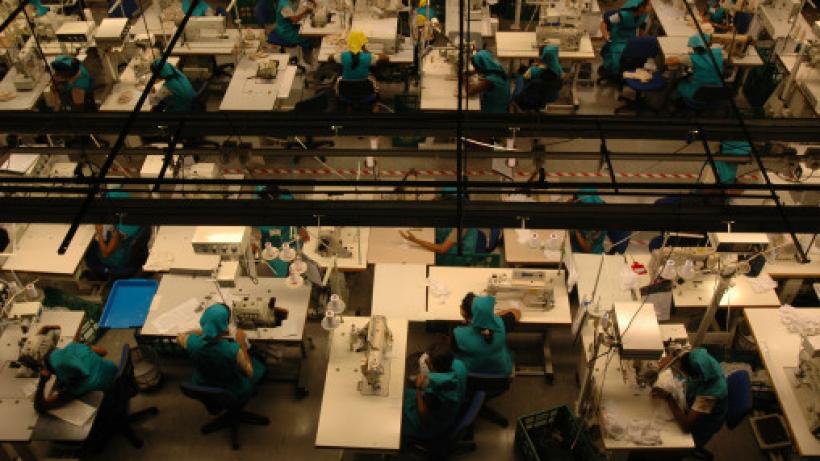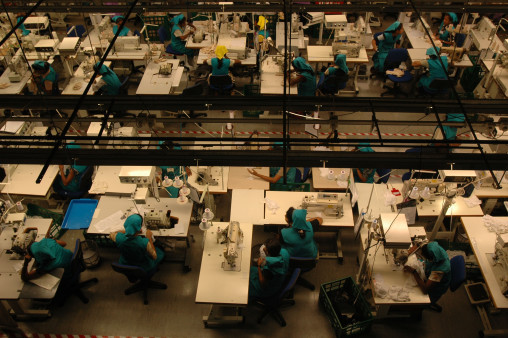
Could emerging economies change the rules of the global labour standards game?
In an increasingly global marketplace, the ramping up of trade has drastically altered the way goods are manufactured and sold. State and civil society must act together in emerging markets if they hope to shape global labour standards in a way that protects both workers and their environment.
The issue of global labour standards has been at the forefront of both regional and multilateral trade negotiations over the past two decades, and will likely remain high on the agenda of future trade talks as North-South trade flows continue to increase. Three key developments have contributed to the rise of this issue: first, an international consensus has been reached on a set of core labour standards established by the International Labour Organization (ILO), second, labour standard provisions have become increasingly prominent in bilateral and regional trade agreements; and last but not the least, consumers have started to increasingly demand products produced under better labour conditions. In other words, labour standards and trade are becoming increasingly linked.
In a world dominated by GVCs, there is a need to protect final consumers through appropriate quality standards on the demand side and to protect the rights and welfare of labourers on the demand side.
It is becoming increasingly clear that in this increasingly integrated world economy global standards and global labour standards will become the tools for global governance. There is considerable curiosity among commentators to see how the rise of emerging economies will influence the processes of setting global standards associated with labour conditions and environmental impact. That they will change the rules of the game is of little doubt. Many commentators suggest that this is a transformative moment in global history and these economies will bring about tectonic movements in global production, trade, and aid relationships (Henderson, 2008; Kaplinsky & Messner, 2008; Brautigam, 2009; Yeung, 2009; Power et al., 2012).

Garment factory, Sri Lanka
Image credit: ILO in Asia and the Pacific
How emerging economies will shape global standard setting processes will depend on two issues: preferences and capabilities. What are the preferences of emerging powers, or how do they wish (if they wish at all) to leave an imprint on the process? Do they have the capacity to influence the global standards setting processes?
There are four processes and vectors through which the emerging powers can engage with the global standards setting process.
Changes via production
Two most important phenomena of the global economy in the past two decades have been the shift in geography of global production and the increasing fragmentation of production across borders. The presence of emerging economies in the global value chains are rising (Gereffi et al. 2015, OECD, 2013). The share of richer countries in total value added that was generated in all manufacturing Global Value Chains (GVCs) declined from 74% in 1995 to 56% in 2008, the share of Japan and East Indian newly industrialised economies (NIEs) dropped from 21 to11%, while emerging economies’ share of value added in manufacturing increased by 18%. Half of this increase can be accrued to China. China’s global share rose from 4 to 13%. Brazil, Russia, India and Mexico also increased their global share. During this period 42 million manufacturing jobs were added in China, 20 million in India, 6 million in Brazil and 2 million in Mexico (Timmer et al., 2014).
This shifting pattern was exacerbated by the 2008-2009 global recession. The major brunt of this recession was borne by the developed countries, whereas large emerging economies such as China, India and Brazil suffered relatively lesser. In 2005-2010, the merchandise imports of the European Union and the USA increased only by 27 and 14%, respectively, while emerging economies expanded their merchandise imports much faster: Brazil (147%), India (129%), China (111%) and South Africa (51%) (WTO, 2011). The import growth in emerging economies is also driven by rising demand for intermediate goods and raw materials because manufacturing GVCs are concentrated in those economies, as discussed above (Kaplinsky et al., 2011).
This phenomenon is already having important implications for trade and investment patterns and policies. It has also triggered concerns about standards. In a world dominated by GVCs, there is a need to protect final consumers through appropriate quality standards on the demand side and to protect the rights and welfare of labourers on the demand side. To this end, it will be paramount to establish and enforce occupational, health, and safety standards on the supply side. The richer countries have already faced challenges over the governance of labour and environmental standards. Now it remains to be seen if emerging economy firms face the same pressures that western brands have been facing for some time in addressing the labour and environmental standards, and if so, how they will tackle it.
Changes via shifts in demand
With increasing incomes, the rising powers have emerged as major consumers in the global market. During the recent global recession, the markets have shifted from Europe and North America towards the East and the Global South. The rising global middle class, a significant proportion of which is located in the emerging economies will have consequences on the global governance pattern and on the process of global standards Guarin and Knorringa (2013).
It remains to be seen if the consumers in the emerging market remain concerned only with the price and quality of the goods or do they attach value on the social and environmental impacts of their consumption decisions? There is evidence that this has happened in the developed world. Organised consumer pressure and effective state action have been able to improve working conditions of labourers (Trumbull, 2006). Will the emerging economies’ consumers behave in the same way? As Alden et al. (1999) has put it, will we see a convergence towards a “global consumer culture”? That will definitely impact the global labour standards scenario.
Changes via civil society and state
The third and fourth vectors are actors rather than processes through which labour norms can impact an economy’s performance: civil society bodies and state. Studies like Bartley (2007) and O’Rourke (2008) found that civil society has emerged as a primary stakeholder in negotiating labour, health and safety, and environmental standards. Particularly in western developed countries, civil societies have proved to be some of the most effective proponents of strengthening labour and environmental norms.
Last but not the least, while much of the recent agenda on labour, environmental and social standards in production has been driven by private actors (private firms and NGOs); the importance of state in global governance is increasing. The state provides the regulatory framework, promulgating laws and ensuring their judicial enforcement, under which labour and environmental considerations are structured. It will be interesting to see how the governments of these emerging economies address these issues.
References:
Alden, D., Steenkamp, J. E. & Batra, R. (1999) Brand positioning through advertising in Asia, North America, and Europe: the role of global consumer culture, Journal of Marketing, 63, pp. 75–87.
Bartley, T. (2007) Institutional emergence in an era of globalization: The rise of transnational private regulation in labor and environmental conditions, American Journal of Sociology, 113(2), pp. 297–351.
Brautigam, D. (2009) The Dragon’s Gift: The Real Story of China in Africa (Oxford: Oxford University Press).
Lee, J., & Gereffi, G. Global Value Chains, Rising Power Firms and Economic and Social Upgrading.
Guarín, A., & Knorringa, P. (2014) New middle-class consumers in rising powers: Responsible consumption and private standards. Oxford development studies.
Henderson, J. (2008) China and global development: towards a global-Asian Era? Contemporary Politics, 14(4), pp. 375–392.
Kaplinsky, R. & Messner, D. (2008) Introduction: the impact of Asian drivers on the developing world, World Development, 36(2), pp. 197–209.
Kaplinsky, R., Terheggen, A. and Tijaja, J. (2011), “China as a final market: the Gabon timber and Thai cassava value chains”, World Development, Vol. 39 No. 7, pp. 1177-1190.
OECD, W. UNCTAD. Implications of Global Value Chains for Trade, Investment, Development and Jobs. Prepared for the G-20 Leaders Summit, Saint Petersburg (Russian Federation), September 2013.
O’Rourke, D. (2008) Market movements: nongovernmental organization strategies to influence global production and consumption, Journal of Industrial Ecology, 9(1–2), pp. 115 –128.
Power, M., Giles, M. & Tan-Mullins, M. (2012) China’s Resource Diplomacy in Africa: Powering Development? (London: Palgrave Macmillan).
Timmer, M.P., Erumban, A.A., Los, B., Stehrer, R. and de Vries, G.J. (2014), “Slicing up global value chains”, Journal of Economic Perspectives, Vol. 28 No. 2, pp. 99-118.
Trumbull, G. (2006) Consumer Capitalism: Politics, Product Markets, and Firm Strategy in France and Germany (Ithaca, NY: Cornell University Press).
Yeung, H. W.-C. (2009) Regional development and the competitive dynamics of global production networks: an East Asian perspective, Regional Studies, 43(3), pp. 325–351.

